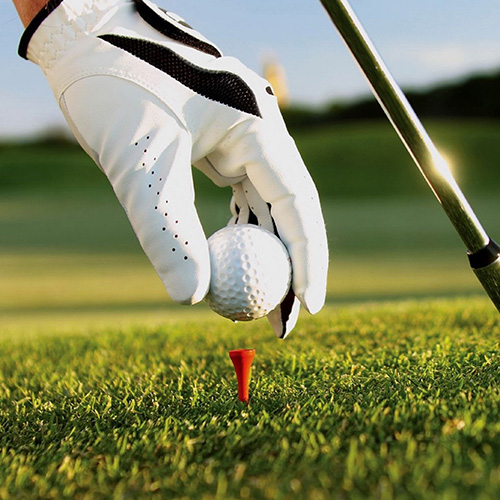Preparing to Play Golf in Cold Weather

Winter months in the northeast mark the off–season for most players. Golf enthusiasts anxiously await springtime, but March and April still host their share of cold–weather days.
Here are a few tips on how to prepare to play in chilly conditions.
-
Layer Up — Your base layer is the most important layer of clothing for cold–weather golf. Thermal tops and leggings help trap in heat and keep your muscles loose. Along with thermals, players should consider wearing:
-
A winter cap
-
Thermal socks
-
Winter golf gloves
-
Waterproof golf shoes
A golf vest is a smart choice for warmth and performance. Vests provide a greater range of motion for your arms and shoulders, which can feel restricted when wearing multiple layers underneath.
-
-
Fuel up — Cold weather burns more calories than usual, so eating prior to and during your round is important. High–fat snacks like nuts, cheese, or even an egg sandwich give your body fuel to sustain energy and warmth. Eating during the round is equally important since you’ll be outside for over four hours. Foods like protein bars, peanut butter crackers, or grapes are good to pack in your golf bag.
Remember to drink plenty of fluids, even when it’s cold.
-
Take Extra Time to Warm Up — Arrive to the course 10–15 minutes earlier than usual. You’ll have more time to stretch and hit balls at the range. It’s tougher to loosen muscles in cold temperatures, so extending your warm–up time can help your performance and avoid injury.
-
Walk the Course — You may not control the weather, but you can control how active you are during your round. Walking the course will improve your circulation and help you stay warm. It’s a better option than sitting in a golf cart and enduring a chilly breeze as the cart moves 10–to–15 miles per hour.
-
Lower Expectations — Cold weather is not ideal for low–scoring rounds. The ball carries less distance in cold air, the ball rolls less when it lands due to frozen or muddy surfaces, and clubhead speed is diminished because muscles and joints can be stiff in cold weather. Combine that with rust from the off–season and it’s reasonable to expect a higher score after 18 holes.
One final tip for when you’re on the course, you may need to adjust your club selection because the ball will travel less distance. If you are 150 yards from the pin and typically hit an 8–iron, your 7–iron may be the right choice in cold conditions.
NJM, a leading property and casualty insurer in the Mid–Atlantic region, is proud to partner with the golf community. Contact your agent or broker, visit njm.com/njsga, or find an agent at njm.com/agentdirectory, or visit njm.com/business.



